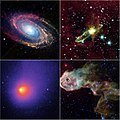Berkas:Ssc2003-06k 250.jpg
Tampilan

Ukuran pratayang ini: 599 × 600 piksel. Resolusi lainnya: 240 × 240 piksel | 627 × 628 piksel.
Ukuran asli (627 × 628 piksel, ukuran berkas: 97 KB, tipe MIME: image/jpeg)
Riwayat berkas
Klik pada tanggal/waktu untuk melihat berkas ini pada saat tersebut.
| Tanggal/Waktu | Miniatur | Dimensi | Pengguna | Komentar | |
|---|---|---|---|---|---|
| terkini | 17 Januari 2007 22.06 |  | 627 × 628 (97 KB) | Siebrand | {{Information |Description=<table border="1"> <tr><td>Image ID: ssc2003-06k</td><td>Release date: en:December 19, en:2003</td></tr> <tr><td colspan="2">Source: [http://www.spitzer.caltech.edu/Media/releases/ssc2003-06/ssc2003-06k.shtml Spitzer n |
Penggunaan berkas
Halaman berikut menggunakan berkas ini:
Penggunaan berkas global
Wiki lain berikut menggunakan berkas ini:
- Penggunaan pada af.wikipedia.org
- Penggunaan pada cs.wikipedia.org
- Penggunaan pada fa.wikipedia.org
- Penggunaan pada fr.wikipedia.org
- Penggunaan pada ko.wikipedia.org
- Penggunaan pada lb.wikipedia.org
- Penggunaan pada nl.wikipedia.org
- Penggunaan pada ru.wikipedia.org
- Penggunaan pada sk.wikipedia.org


